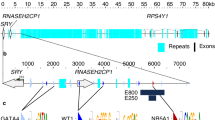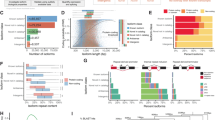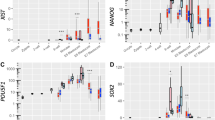Abstract
The mammalian Y chromosome may be an attractor for selfish growth factors. A suppressor of the selfish growth effects would be expected to spread were it to have an appropriate parent-specific expression rule. A suppressor could act by boosting the resource demands of competing female embryos. This possibility may explain incidences of the escape from X-inactivation and provides a rationale for why these genes typically have Y-linked homologues. Alternatively, a suppressor could act to decrease the resource demands of males with the selfish Y This possibility is supported by the finding that the size of male, but not female, human infants is negatively correlated to the number of X chromosomes. A protracted arms race between a selfish gene and its suppressor may ensue. Both the variation in copy number of Zfy and the unusually fast sequence evolution of Sry may be explained by such an arms race. As required by the model, human Sry is known to have an X-linked suppressor. Preliminary evidence suggests that, as predicted, rapid sequence evolution of Sry may be correlated with female promiscuity. The case for fast sequence evolution as the product of maternal/foetal conflict is strengthened by consideration of the rapid evolution of placental lactogens in both ruminants and rodents.
Similar content being viewed by others
Article PDF
References
Ashworth, A, Rastan, S, Lovell-Badge, R, and Kay, G. 1991. X-chromosome inactivation may explain the difference in viability of XO humans and mice. Nature, 351, 406–408.
Ballabio, A, and Willard, H F. 1992. Mammalian X-chromosome inactivation and the XIST gene. Curr Opin Gen Dev, 2, 439–447.
Bianchi, N O, Bianchi, M S, Pamilo, P, Vidal-Rioja, L, and De La Chapelle, A. 1992. Evolution of zinc finger-Y and zinc finger-X genes in Oryzomyne-Akodontine rodents (Cricetidae). J Mol Evol, 34, 54–61.
Bishop, C E. 1992. Mouse Y chromosome. Mammal Genome, 3, S289–S293.
Bo, M, and Boime, I. 1992. Identification of the transcriptionally active genes of the chorionic gonadotropin β gene cluster in vivo. J Biol Chem, 267, 3179–3184.
Bressler, S L, Lee, K H, Adler, D A, Chapman, V M, and Disteche, C M. 1993. Maintenance of X inactivation of the Rsp4, Zfx and Ubel genes in a mouse in vitro system. Som Cell Mol Genet, 19, 29–37.
Brown, S D M, Avner, P, and Herman, G E. 1992. Mouse X chromosome. Mammal Genome, 3, S274–S288.
Burt, A, and Trivers, R. Genes in Conflict. Harvard University Press, Cambridge, MA (in preparation).
Charlesworth, B. 1991. The evolution of sex chromosomes. Science, 251, 1030–1033.
Charlesworth, B. 1993. More mutations in males? Current Biol, 3, 466–467.
Chen, A T L, Chan, Y K, and Falek, A. 1971. The effects of chromosome abnormalities on birth weight in man. I Sex chromosome disorders. Human Hered, 21, 543–556.
Coles, K, Mackenzie, M, Crolla, J, Harvey, J, Starr, J, Howard, F, and Jacobs, P A. 1992. A complex rearrangement associated with sex reversal and the Wolf-Hirschorn syndrome: a cytogenetic and molecular study. J Med Genet, 29, 400–406.
Daughaday, W H. 1989. Growth hormone: normal synthesis, secretion, control, and mechanisms of action. In: DeGroot, L. J. (ed.) Endocrinology, 2nd edn, pp. 318–329. W. B. Saunders, Philadelphia.
Davies, K E, Mandel, J L, Monaco, A P, Nussbaum, R L, and Willard, H F. 1991. Report of the committee on the genetic constitution of the X chromosome: human gene mapping 11. Cytogenet Cell Genet, 58, 853–966.
Disteche, C M, Zacksenhaus, E, Adler, D A, Bressler, S L, Keitz, B T, and Chapman, V M. 1992. Mapping and expression of the ubiquitin-activity enzyme El (Ubel) gene in the mouse. Mammal Genome, 3, 156–161.
Ellis, N, and Goodfellow, P N. 1989. The mammalian pseudoautosomal region. Trends Genet, 5, 406–410.
Eriksson, L, Frankenne, F, Edèn, S, Hennen, G, and Von Schoultz, B. 1989. Growth hormone 24-h serum profiles during pregnancy — lack of pulsatility for the secretion of the placental variant. Br J Obstet Gynaecol, 96, 949–953.
Fellinger, E J, Garin-Chesa, P, Glasser, D B, Huvos, A G, and Rettig, W J. 1992. Comparison of cell surface antigen HBA71 (p30/32MIC2), neuron-specific enolase, and vimentin in the immunohistochemical analysis of Ewing's sarcoma of bone. Am J Surg Pathol, 16, 746–755.
Fisher, E M C, Beer-Romero, P, Brown, L G, Ridley, A, McNeil, J A, Lawrence, J B, Willard, H F, Bieber, F R, and Page, D C. 1990. Homologous ribosomal protein genes on the human X and Y chromosomes: escape from X inactivation and possible implications for Turner Syndrome. Cell, 63, 1205–1218.
Foster, J W, Brennan, F E, Hampikian, G K, Goodfellow, P N, Sinclair, A H, Lovell-Badge, R, Selwood, D W, and Marshall Graves, J A. 1992. Evolution of sex determination and the Y chromosome: >SRY-related sequences in marsupials. Nature, 359, 531–533.
Frankenne, F, Closset, J, Gomez, F, Scippo, M L, Smal, J, and Hennen, G. 1988. The physiology of growth hormones (GHs) in pregnant women and partial characterization of the placental GH variant. J Clin Endocrinol Metab, 66, 1171–1180.
Fraser, N, Ballabio, A, Zollo, M, Persico, G, and Craig, I. 1987. Identification of incomplete coding sequences for steroid sulphatase on the human Y chromosome: evidence for an ancestral pseudoautosomal gene? Devel Suppl 101, 127–132.
Goodfellow, P N, and Tippett, P. 1981. A human quantitative polymorphism related to Xg blood groups. Nature, 289, 404–405.
Goodfellow, P, Pym, B, Mohandas, T, and Shapiro, L J. 1984. The cell surface antigen locus, MIC2X, escapes X-inactivation. Am J Hum Genet, 36, 777–782.
Haig, D. 1993. Maternal-fetal conflict in human pregnancy. Q Rev Biol, 68, 495–532.
Haldane, J B S. 1947. The mutation rate for haemophilia and its segregatation ratios in males and females. Ann Eugen, 13, 262–271.
Halverson, J L, and Dvorak, J. 1993. Genetic control of sex determination in birds and the potential for its manipulation. Poultry Sci, 72, 890–896.
Hamilton, W D. 1967. Extraordinary sex ratios. Science, 156, 477–488.
Harcourt, A H, Harvey, P H, Larson, S G, and Short, R V. 1981. Testis weight, body weight and breeding system in primates. Nature, 293, 55–57.
Hayashida, H, Kuma, K, and Miyata, T. 1992. Interchromosomal gene conversion as a possible mechanism for explaining divergence patterns of ZFY-related genes. J Mol Evol, 35, 181–183.
Hendriksen, P J M, Hoogerbrugge, J W, Van Der Lende, T, and Grootegoed, J A. 1993. Transcription of the X and Y chromosomes in mouse spermatids. J Reprod Fertil, 12, 12.
Hill, R E, and Hastie, N D. 1987. Accelerated evolution in the reactive centre regions of serine protease inhibitors. Nature, 326, 96–99.
Hughes, A L. 1991. Circumsporozoite protein genes of malaria parasites (Plasmodium spp.): evidence for positive selection on immunogenic regions. Genetics, 127, 345–353.
Hughes, A L, and Nei, M. 1988. Pattern of nucleotide substitution at major histocompatibility complex class I loci: evidence for overdominant selection. Nature, 335, 167–170.
Hughes, A L, Ota, T, and Nei, M. 1990. Positive Darwinian selection promotes charge profile diversity in the antigen binding cleft of class I MHC molecules. Mol Biol Evol, 7, 515–524.
Hurst, L D. 1992. Is Stellate a relict meiotic driver? Genetics, 130, 229–230.
Hurst, L D. 1993. scat+ is a selfish gene analogous to Medea of Tribolium castaneum. Cell, 75, 407–408.
Hurst, L D. 1994. Embryonic growth and the evolution of the mammalian Y chromosome. I. The Y as an attractor for selfish gene factors. Heredity, 73, 223–332.
Jones, J, Peters, J, Rasberry, C, and Cattanach, B M. 1989. X-inactivation of the Sts locus in the mouse: an anomaly of the dosage compensation mechanism. Genet Res, 53, 193–199.
Keitges, E, and Gartler, S M. 1986. Dosage of the Sts gene in the mouse. Am J Hum Genet, 39, 470–476.
Koopman, P, Gubbay, J, Vivian, N, Goodfellow, P, and Lovell-Badge, R. 1991. Male development of chromosomally female mice transgenic for Sry. Nature, 351, 117–121.
Lanfear, J, and Holland, P W H. 1991. The molecular evolution of ZFY-related genes in birds and mammals. J Mol Evol, 32, 310–315.
Maaswinkel-Mooij, P D, Van Zwieten, P, Mollervanger, P, Van Noort, E, and Beverstock, G. 1992. A girl with 71, XXXXY karyotype. Clin Genet, 41, 96–99.
McElreavey, K, Vilain, E, Abbas, N, Herskowitz, I, and Fellous, M. 1993. A regulatory cascade hypothesis for mammalian sex determination: SRY represses a negative regulator of male development. Proc Natl Acad Sci USA, 90, 3368–3372.
Migeon, B R, Shapiro, L J, Ivorum, R A, Mohandas, T, Axelman, J, and Dabova, R L. 1982. Differential expression of the steroid sulfatase locus on the active and inactive human X chromosome. Nature, 299, 838–839.
Mitchell, M J, Woods, D R, Wilcox, S A, Graves, J A M, and Bishop, C E. 1992. Marsupial Y chromosome encodes a homologue of the mouse Y-linked candidate spermatogenesis gene Ubely. Nature, 359, 528–531.
Miyata, T, Hayashida, H, Kuma, K, Mitsuyasu, K, and Yasunaga, T. 1987. Male-driven molecular evolution: a model and nucleotide sequence analysis. Cold Spring Harb Symp Quant Biol, 52, 863–867.
Moore, T, and Haig, D. 1991. Genomic imprinting in mammalian development: a parental tug-of-war. Trends Genet, 7, 45–48.
Ogata, T, and Matsuo, N. 1993. Sex chromosomes and stature: detection of the principal factor involved in the determination of adult height. Hum Genet, 91, 551–562.
Ogata, T, Hawkins, J R, Taylor, A, Matsuo, N, Hata, J, and Goodfellow, P N. 1992. Sex reversal in a child with a 46, X, Yp + karyotype: support for the existence of a gene(s), located in distal Xp, involved in testis formation. J Med Genet, 29, 226–230.
Pamilo, P, and Bianchi, N O. 1993. Evolution of Zfx and Zfy genes: rates and interdependence between the genes. Mol Biol Evol, 10, 271–281.
Peters, L L, and Barker, J E. 1993. Novel inheritance of the murine severe combined anemia and thrombocytopenia (Scat) phenotype. Cell, 74, 135–142.
Pomiankowski, A, and Hurst, L D. 1993. Genomic conflicts underlying Haldane's rule. Genetics, 133, 425–432.
Salido, E C, Yen, P H, Koprivnikov, K, Yu, L C, and Shapiro, L J. 1992. The human enamel protein gene amelogenin is expressed from both the X and the Y chromosome. Am J Hum Genet, 50, 303–316.
Schiebel, K, Weiss, B, Wohrle, D, and Rappold, G. 1993. A human pseudoautosomal gene ADP/ATP translocase, escapes X-inactivation whereas a homolog on Xq is subject to X-inactivation. Nat Genet, 3, 82–87.
Schneider-Gādicke, A, Beer-Romero, P, Brown, L G, Nussbaum, R, and Page, D C. 1989. Zfx has a gene structure similar to Zfy, the putative human sex determinant, and escapes X inactivation. Cell, 57, 1247–1258.
Shimmin, L C, Chang, B H-J, and Li, W-H. 1993. Male driven evolution of DNA sequences. Nature, 362, 745–747.
Slim, R, Levilliers, J, Ludecke, H J, Claussen, U, Nguyen, V C, Gough, N M, Horsthemke, B, and Petit, C. 1993. A human pseudoautosomal gene encodes the ANT3 ADP ATP translocase and escpes X-inactivation. Genomics, 16, 26–33.
Smith, M J, Goodfellow, P J, and Goodfellow, P N. 1993. The genomic organisation of the human pseudoautosomal gene MIC2 and the detection of a related locus. Hum Mol Genet, 2, 417–422.
Snead, M L, Luo, W, Hsu, D D, Melrose, R J, Lau, E C, and Stenman, G. 1992. Human ameloblastoma tumors express the amelogenin gene. Oral Surg Oral Med Oral Pathol, 74, 64–72.
Talmadge, K, Vamvakopoulos, N C, and Fiddes, J C. 1984. Evolution of the genes for the β subunits of human chorionic gonadotropin and luteinizing hormone. Nature, 307, 37–40.
Thornhill, A R, and Burgoyne, P S. 1993. A paternally imprinted X chromosome retards the development of the early mouse embryo. Development, 118, 171–174.
Tricoli, J V, and Bracken, R B. 1993. Zfy gene expression and retention in human prostate adenocarcinoma. Genes Chrom Cancer, 6, 65–72.
Tricoli, J V, Yao, J L, D'Souza, S A, and Bracken, R B. 1993a. Detection of sex-region-Y (Sry) transcripts in human prostate adenocarcinoma and benign prostatic hypertrophy. Genes Chrom Cancer, 8, 28–33.
Tricoli, J V, Yao, J, and D'Souza, S A. 1993b. Evidence for the expression of the sex-region Y (SRY ) gene in human renal cell carcinoma from males. Am J Hum Genet, 53 (Suppl.), abstract no. 379.
Tucker, P K, and Lundrigan, B L. 1993. Rapid evolution of the sex determining locus in Old World mice and rats. Nature, 364, 715–717.
Vacquier, V D, and Lee, Y-H. 1993. Abalone sperm lysin: unusual mode of evolution of a gamete recognition protein. Zygote, 1, 181–196.
Walker, W H, Fitzpatrick, S L, Barrera-Saldaña, H A, Reséndez-Pérez, D, and Saunders, G F. 1991. The human placental lactogen genes: structure, function, evolution, and transcriptional regulation. Endocr Rev, 12, 316–328.
Wallis, M. 1993. Remarkably high rate of molecular evolution of ruminant placental lactogens. J Mol Evol, 37, 86–88.
Watson, J M, Frost, C, Spencer, J A, and Graves, J A. 1993. Sequences homologous to the human X- and Y-borne zinc finger protein gene Zfx/y are autosomal in monotreme mammals. Genomics, 15, 317–322.
Whitfield, S L, Lovell-Badge, R, and Goodfellow, P N. 1993. Rapid sequence evolution of the mammalian sex-determining gene SRY. Nature, 364, 713–715.
Wolfe, K H, and Sharp, P M. 1993. Mammalian gene evolution: nucleotide sequence divergence between mouse and rat. J Mol Evol, 37, 441–456.
Yen, P H, Ellison, J, Salido, E C, Mohandas, T, and Shapiro, L. 1992. Isolation of a new gene from the distal short arm of the human X chromosome that escapes X-inactivation. Hum Mol Genet, 1, 47–52.
Author information
Authors and Affiliations
Rights and permissions
About this article
Cite this article
Hurst, L. Embryonic growth and the evolution of the mammalian Y chromosome. II. Suppression of selfish Y-linked growth factors may explain escape from X-inactivation and rapid evolution of Sry. Heredity 73, 233–243 (1994). https://doi.org/10.1038/hdy.1994.128
Received:
Issue date:
DOI: https://doi.org/10.1038/hdy.1994.128
Keywords
This article is cited by
-
Inefficient purifying selection: the mammalian Y chromosome in the rodent genus Mus
Mammalian Genome (2006)
-
The human Y chromosome, in the light of evolution
Nature Reviews Genetics (2001)
-
A family of rapidly evolving genes from the sex reversal critical region in Xp21
Mammalian Genome (1995)
-
Embryonic growth and the evolution of the mammalian Y chromosome. I. The Y as an attractor for selfish growth factors
Heredity (1994)



